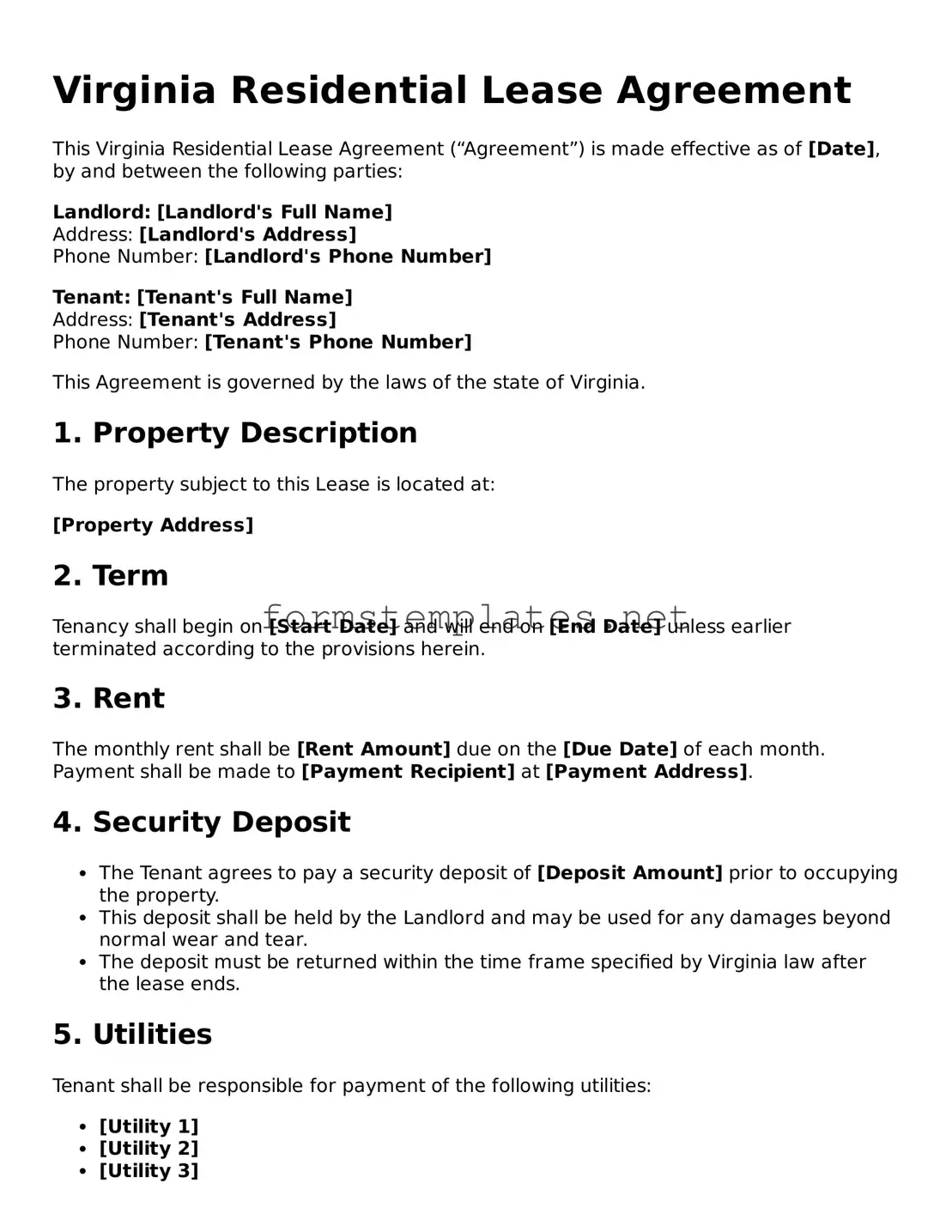Virginia Residential Lease Agreement
This Virginia Residential Lease Agreement (“Agreement”) is made effective as of [Date], by and between the following parties:
Landlord: [Landlord's Full Name]
Address: [Landlord's Address]
Phone Number: [Landlord's Phone Number]
Tenant: [Tenant's Full Name]
Address: [Tenant's Address]
Phone Number: [Tenant's Phone Number]
This Agreement is governed by the laws of the state of Virginia.
1. Property Description
The property subject to this Lease is located at:
[Property Address]
2. Term
Tenancy shall begin on [Start Date] and will end on [End Date] unless earlier terminated according to the provisions herein.
3. Rent
The monthly rent shall be [Rent Amount] due on the [Due Date] of each month.
Payment shall be made to [Payment Recipient] at [Payment Address].
4. Security Deposit
- The Tenant agrees to pay a security deposit of [Deposit Amount] prior to occupying the property.
- This deposit shall be held by the Landlord and may be used for any damages beyond normal wear and tear.
- The deposit must be returned within the time frame specified by Virginia law after the lease ends.
5. Utilities
Tenant shall be responsible for payment of the following utilities:
- [Utility 1]
- [Utility 2]
- [Utility 3]
6. Maintenance and Repairs
The Tenant agrees to keep the premises in good condition. The Landlord will be responsible for major repairs that are not due to the Tenant's negligence.
7. Termination
This Agreement may be terminated by the Landlord or Tenant, provided that appropriate notice is given as required by Virginia state law.
8. Additional Terms
Any additional provisions regarding this lease, such as pet policies or smoking restrictions, should be outlined as follows:
- [Additional Terms 1]
- [Additional Terms 2]
- [Additional Terms 3]
9. Signatures
By signing below, both parties agree to all terms and conditions outlined in this Lease Agreement:
Landlord Signature: ____________________ Date: ______________
Tenant Signature: ____________________ Date: ______________
